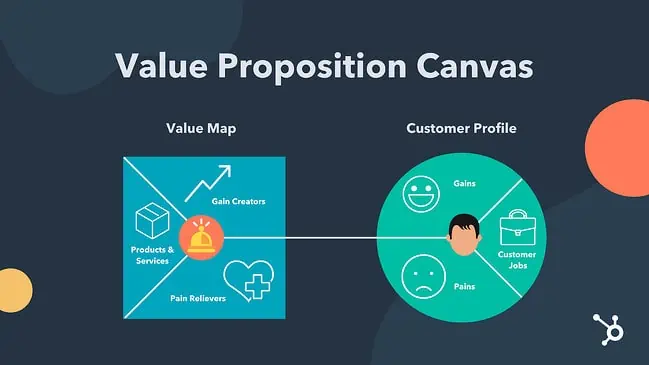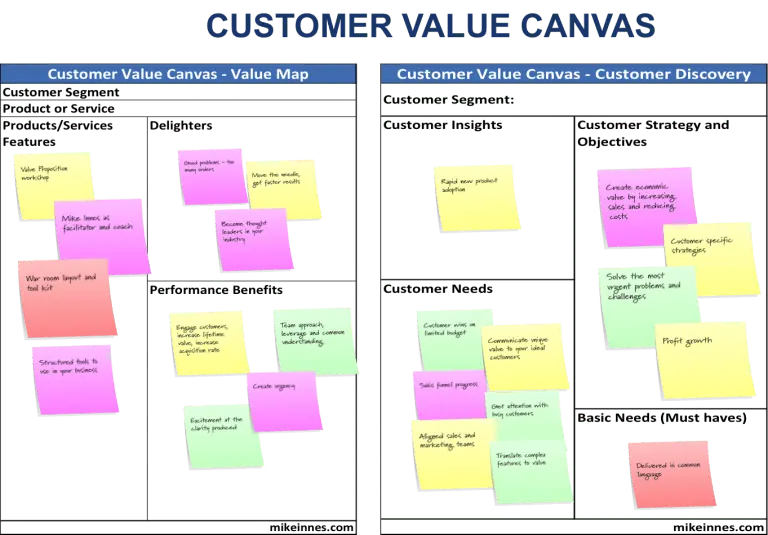Having a clear and compelling Value Proposition is essential for the success of a business. It helps set a company apart from its competitors by communicating its unique value to customers. A strong Value Proposition should be simple, easy to understand, and clearly state the benefits a customer will receive from the company's products or services. Many businesses struggle with defining their Value Proposition and may bury it in vague language or overlook it entirely. However, a well-defined Value Proposition is critical in attracting and retaining customers and is a key component of a company's overall marketing messaging.
Definition

A Value Proposition is a marketing tool that clearly defines the unique value a company offers to its target customers. It is a key factor in a company's success, as it differentiates the company from its competitors, clarifies its positioning in the market, and helps attract and retain customers. A Value Proposition is a statement that communicates the benefits a customer will receive, how it solves their problem or meets their need, and what sets it apart from other offerings. It should be simple, clear, and easy to understand, reflecting the company's goals and target market. A well-defined Value Proposition is a critical component of a successful business strategy and can help a company to differentiate itself and achieve a competitive advantage in the market.
A value proposition is a statement communicating a product or service's unique value to its customers and why they should choose it over its competitors. A strong value proposition can help create an economic moat for a company by attracting and retaining customers who are most likely to benefit from its products or services. An economic moat is a barrier that makes it difficult for competitors to enter the market and capture the company's customers, leading to sustainable competitive advantage and long-term growth.
A company's value proposition is a crucial component of its marketing strategy and should communicate the unique benefit or advantage of the product/service to the target customer segment. It should be easy to understand and differentiate the company from its competitors. Placing it prominently on the website and other touchpoints helps reinforce the message and build brand recognition. A strong and clear headline that succinctly communicates the value proposition is essential for it to stand out and be memorable. It should be concise, impactful, and relevant to the target customer segment. Using a tagline or slogan can also help to reinforce the message and create brand recognition. A good value proposition should effectively capture the unique selling point of the product/service and communicate it in a way that resonates with the target audience. The subheading expands on and provides additional detail to the main headline, further emphasizing the unique value proposition of the product/service. It should give specific examples and highlight the key benefits or features that set it apart from competitors. Utilizing bullet points, bold text, or other means of emphasis can help to make the information more accessible and memorable for the customer. The subheading should complement the main headline and provide a clearer and more comprehensive understanding of the value proposition. A clear and structured value proposition makes it easy for consumers to quickly understand the key benefits of the product/service and differentiate it from competitors. Adding visuals such as graphics, images, or charts can help to reinforce the message and make it more engaging and memorable. Market research can be a valuable tool for companies in crafting a strong value proposition. It provides insight into the needs, desires, and pain points of the target customer segment, allowing the company to tailor its messaging accordingly and ensure that it resonates with its audience.
The Importance
Developing a strong Value Proposition is a crucial step in creating a successful business strategy. The Value Proposition defines a company's unique value to its customers and helps drive sales and build a customer base. It is often displayed on the company's marketing materials, such as its website, and is a powerful tool for influencing potential customers' decision-making.
A well-crafted Value Proposition is considered one of the most effective marketing activities and can greatly enhance the effectiveness of a company's marketing efforts. A compelling Value Proposition is a key component of a successful marketing strategy and can help a company to differentiate itself from its competitors, attract and retain customers, and achieve long-term success.
Types of Value Propositions
A value proposition creates value for a customer segment by addressing their specific needs and desires through a unique combination of elements. These elements can be either quantitative, such as price, speed of service, or quality, or qualitative, such as design, customer experience, or brand image. The mix of elements will vary depending on the target customer segment and the product/service being offered. Common elements contributing to customer value creation include quality, price, convenience, innovation, reliability, customer support, and brand reputation.
Newness
New technology or other factors such as customer needs, social trends, and market demands can drive value propositions. In either case, a successful value proposition must offer unique benefits that meet customer needs and differentiate it from other offerings in the market.
Performance
Improving performance has been a common way to create value in many industries, including the PC sector. However, as technology and customer needs advance, performance improvements alone may no longer be enough to drive growth and meet customer demands. Therefore, companies must focus on other value propositions, such as innovation, convenience, sustainability, and customer experience, to stay competitive and meet changing customer needs.
Customization
Tailoring products and services to the specific needs of individual customers or customer segments effectively creates value. Mass customization and customer co-creation allow companies to offer customized solutions while enjoying the benefits of economies of scale, making it a win-win for both the company and the customer. This approach can increase customer satisfaction, loyalty, and higher sales.
Getting the job done
Creating value by helping customers get jobs done is a powerful way to differentiate and build loyalty. Rolls-Royce's approach to supporting its airline customers is a great example of this principle in action. Rolls-Royce has created a valuable relationship that benefits both parties by offering a complete solution that allows customers to focus on running their airlines. The fee-per-hour model aligns the incentives of both the company and the customer, ensuring that the customer gets the support they need to succeed, while Rolls-Royce earns revenue for delivering on its promises.
Design
Design can be a crucial factor in creating value, particularly in industries like fashion and consumer electronics. Design can differentiate a product from its competitors and make it more appealing to customers. However, design can also be difficult to measure and quantify as it often involves subjective preferences and opinions. Despite these challenges, companies in these industries invest heavily in design as it can play a key role in creating a strong brand identity, driving customer loyalty, and generating sales.
Brand and Status
Brand image and status can be powerful sources of value for customers. Brands like Rolex and others are often associated with wealth and luxury, while other brands are associated with a specific lifestyle or cultural identity. Customers may find value in using or displaying these brands because it allows them to signal their own status, values, or membership in a particular group. This psychological aspect of branding can create a strong emotional connection between customers and brands, increasing customer loyalty and brand equity.
Price
Offering a lower price is one way to attract price-sensitive customers. Business models such as no-frills airlines (Southwest, easyJet, Ryanair) and the Tata Nano car have been designed specifically to offer low cost. Offering free products or services (e.g. free newspapers, free email, free mobile services) is also becoming a popular way to attract customers in various industries.
Cost Reduction
Reducing costs for customers is a way to create value. An example is Salesforce.com, which sells a hosted CRM application, eliminating the need for customers to buy, install, and manage the software themselves.
Risk Reduction
Reducing risks for customers is another way to create value. Examples include offering a service guarantee for a used car or a service-level guarantee for outsourced IT services.
Accessibility
Making previously inaccessible products/services available creates value. This can be achieved through business model innovation, new technology, or a combination of both. Examples include NetJets (which offers fractional private jet ownership) and mutual funds (which made it possible for modest wealth to build diversified portfolios).
Usability
Making products easier to use can create value. An example is Apple's iPod and iTunes, which offered convenient access to digital music and now dominates the market.
Create Value Proposition

Having a well-designed value proposition can greatly impact a company's success. However, creating an effective value proposition can be a difficult but rewarding task for businesses. Here are some tips for creating one:
Know your customers
Conducting market research is crucial for creating an effective value proposition. By understanding the target customers and market segment, you can tailor your value proposition to meet their needs and wants, making it more compelling and relevant to them. This will increase their chances of choosing your product or service over competitors.
Understand the costs and benefits
Identifying and assessing the benefits and costs of your company's products or services is important for creating a value proposition. By understanding the benefits delivered and the costs incurred, you can accurately determine the value to your customers and position your product or service accordingly. This information can differentiate your offering from competitors and highlight the unique benefits your customers will receive by choosing your product or service.
Pay attention to your competitors
Analyzing the competitive landscape is an important step in creating a value proposition. By understanding the strengths and weaknesses of your major competitors, you can determine what makes your business unique and position your value proposition in a way that sets you apart from the competition. This will help you target customers who are looking for specific benefits and are not satisfied with what your competitors offer. By differentiating yourself, you can increase the chances of attracting and retaining customers, which is crucial for the success of your business.
Be clear and concise
An effective value proposition should be clear and concise. Your target customers should be able to understand the message quickly and easily without having to read a lot of text or navigate through complex information. Keeping it short, typically two or three sentences, makes it easier for customers to understand and remember, increasing their chances of choosing your product or service over competitors. A clear and concise value proposition can also be easily communicated across different channels, such as your website, marketing materials, and advertisements, helping to reinforce your brand and build customer loyalty.
Appealing design
It's important to make your value proposition visible and appealing on all marketing materials, including your website. A powerful value proposition will have little impact if potential customers do not easily see it. By including it prominently on your website and other marketing materials, you can ensure that your customers understand your value and why they should choose your product or service over competitors. This can help to increase conversions and build brand awareness, which are crucial for the success of your business.
Conclusion
A Value Proposition is a crucial component of a successful business strategy. It outlines a company's unique value to its customers and why it should choose it over its competitors. A well-defined Value Proposition helps to differentiate a company, attract and retain customers, and guide product development, marketing, and sales efforts. It should be simple, clear, and easy to understand, reflecting the company's goals and target market. A strong Value Proposition is essential in today's competitive business environment and is key to a company's success in creating and maintaining a competitive advantage in the market.






